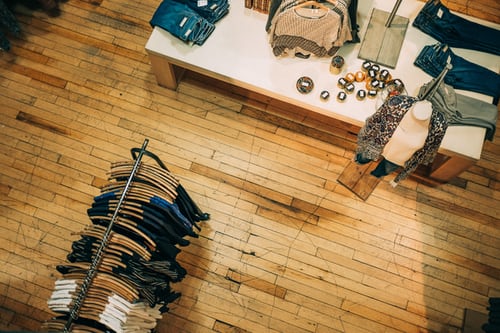

The clothes or garment manufacturing process is a confusing process for many people due to which many people give up the thought of launching a clothing brand. JD Institute is here with a step by step process of garment manufacturing ( in this case of a women’s dress) so that the aspirants can get a better hold of the environment:
The foremost step is to hit the stores and shop making it the easiest step in the process of designing. In fashion design, mostly everything has been designed already but is reinvented.
Once you have the inspired garments, buy them if it is not too expensive which will make the process much easier while if it is expensive a cheaper version of it can be bought. Many times a client demands different styles together for example- the bottom portion of one dress and sleeves of another
Next in the process comes to print and colour design. Is your line going to be about different colours or solid colours? One of the best methods to predict it is to google it while there are tons of fashion shows which reflect the recap of fashion shows showing the upcoming season’s fashion trend
You can start sourcing fabric and trim once you know what your garment will look like. New designers often go for fabric shopping first and then go for designing garments which should be the case when you are working towards product development while from a design perspective, it is the opposite
The Tech pack reflects the blueprint of the garment. It conveys to the factory about each element of the garment such as fabric, colour, where to get labels form etc.
Once your design or tech pack is ready, send it to your clothing manufacturer. Upon this, your supplier will give a preliminary costing but only after a sample has been done can you now the final costing. Ask your supplier to cut down cost if costing comes out too high from the tech packs.
To cut the fabric you will require a pattern. While some factories offer pattern making of their own but some brands wish to work with a local sample maker who can deliver and make these patterns near to where they live. Working with a local sample maker can be helpful if you want to make a lot of changes.
Next in the process is sampling which contains 5 steps namely:
It’s time to move onto production once you have your photos and final costing. If any brand is into wholesale they take this time to get orders from retailers. While if some brands are in direct contact with the consumer they may open up for pre-sale
Until now, your samples are made into sample size only. Most brands make their sample in medium or small size. But if you target plus size, you should go for the sample size that you sell the most
You or a third party should indulge in a quality check before you bulk. There can be a few pieces that are damaged etc due to which the step is significant.
Once everything is approved you should move onto packaging. There are numerous ways to pack a garment and there are tons of regulations on the types of boxes, hangers, how many pieces should be there in a box etc.
There is still work left to be done once your garment is out of the factory. You need to ensure that your garments reach the destination. While part of the job being clearing customs, then from customs making it to the warehouse.
If you are interested in garment manufacturing (with the latest garment manufacturing technology etc), education from a good institution is significant. JD Institute Of Fashion technology is one of the best institutes providing garment manufacturing courses etc with each course being industry-based so that the students get the necessary exposure or are ready for the real world. Due to their exemplary contribution to education, JD Institute has been awarded various token of appreciation such as the leaders in education award, the time’s power icon award, international glory award, best vocational institute of the year and many more. IT also reflects a record-breaking placement of 99% ensuring that talent meets opportunity.